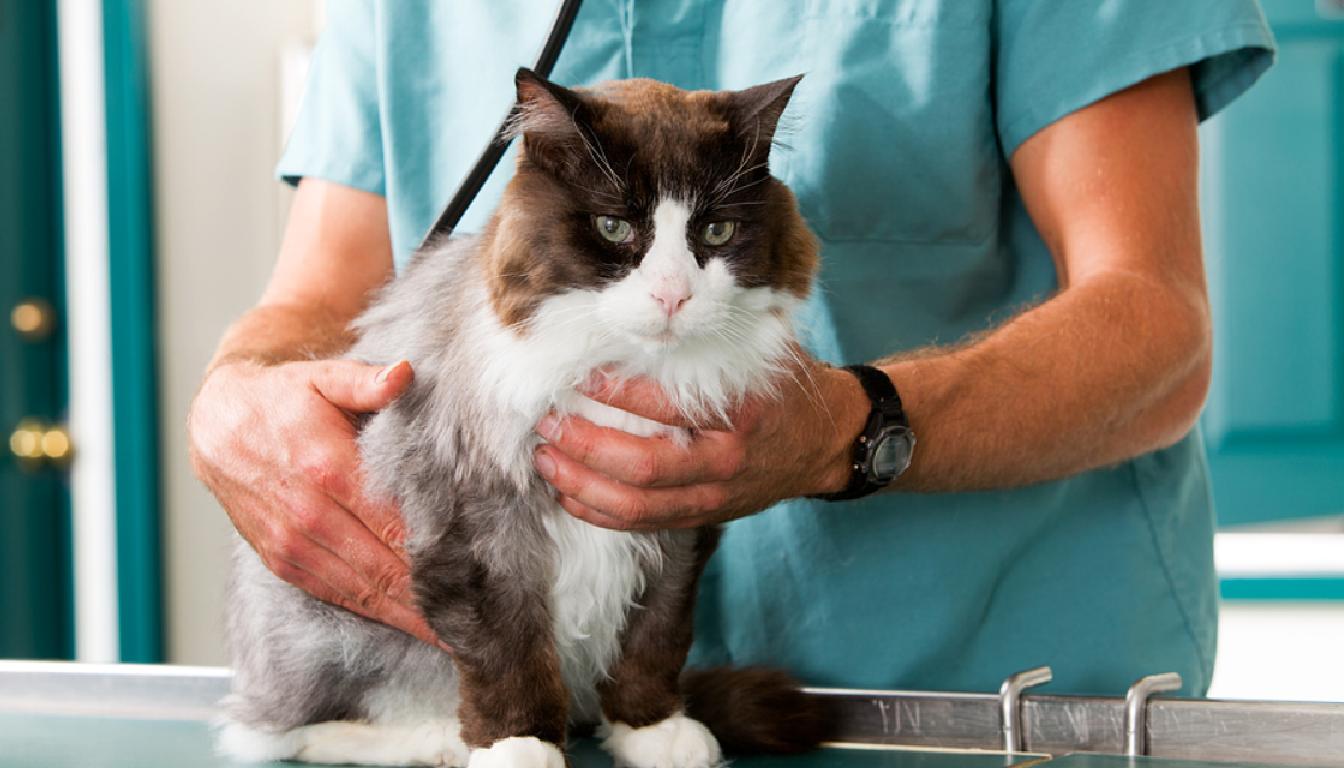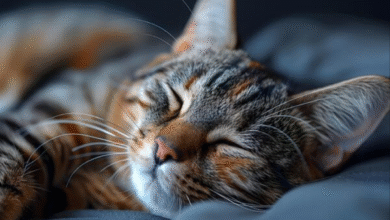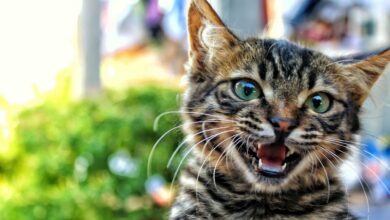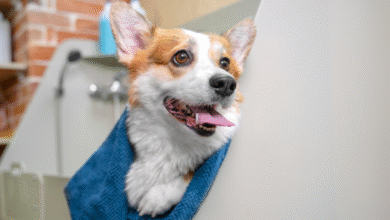Introduction: Understanding Cat Health Challenges
Bringing a cat into your home is a heartwarming experience. Whether it’s a sprightly kitten or a calm adult rescue, the joy and companionship a feline offers are unmatched. However, with pet ownership comes responsibility. Understanding and addressing cat health problems from the beginning ensures a healthier and happier life for your feline friend. All cats, regardless of their background, are susceptible to certain illnesses. Early education and proper care can help mitigate many of these health issues.

1. Worms: A Common and Preventable Threat
One of the most frequently encountered cat health problems is worm infestation. Cats are prone to internal parasites such as roundworms, tapeworms, and hookworms. These parasites can significantly affect a cat’s health, leading to symptoms like weight loss, vomiting, a dull coat, and visible worm segments in the stool. Regular deworming, flea control, and cleanliness play a vital role in preventing these parasites. It’s essential for cat owners to monitor for subtle signs and consult with veterinarians promptly when symptoms appear.
2. Hairballs: A Manageable Issue with Simple Solutions
Another typical concern among cat health problems is hairballs. Cats are meticulous groomers, and in the process of cleaning themselves, they ingest loose hair. This hair may accumulate in the stomach, forming a hairball that is later expelled through vomiting. While this might appear harmless, frequent or severe hairballs can lead to digestive tract blockages. Owners can reduce this risk by brushing their cat regularly to minimize hair ingestion and by using specialized cat food designed to manage hairball formation.
Watch This: Everyday Cat Care to Prevent Health Problems
Before we dive into more serious health risks, it’s worth watching this short vet-approved guide. It offers real-world advice on grooming, feeding, and regular check-ups—daily habits that can prevent most common cat health problems.
3. Urinary Tract Infections (UTIs): Early Signs and Treatment
Urinary tract infections (UTIs) are painful and potentially dangerous cat health problems, especially common in male and older cats. They can be caused by bacteria, urinary crystals, or even stress. A cat suffering from a UTI might begin urinating outside the litter box, a behavior often misinterpreted as disobedience. However, it’s a clear signal of discomfort and the need for medical attention.
Symptoms of UTIs include frequent urination, straining or crying during urination, blood in the urine, pungent urine odor, and urinating outside the litter box. These signs often go unnoticed until the condition becomes severe, making early observation critical. Diagnosis usually involves examining a urine sample at the vet’s clinic and is followed by antibiotics and dietary adjustments to prevent recurrence.
Preventing urinary infections is not complicated. Ensuring constant access to fresh water, maintaining a clean litter box, and providing a balanced diet are foundational steps. Some veterinarians may also recommend prescription diets formulated to support urinary tract health. Addressing these issues early helps prevent chronic cat health problems like urinary crystals and even kidney damage.
4. Feline Leukemia Virus (FeLV): A Silent Threat
Among the more dangerous cat health problems, feline leukemia virus is a contagious disease that compromises a cat’s immune system. Although once considered a leading cause of feline death, it is now largely preventable through proper vaccination. This virus spreads through bodily fluids like saliva and nasal discharge, making outdoor and multi-cat households particularly vulnerable.
Most infected cats do not show immediate symptoms, which makes FeLV particularly insidious. Over time, it may lead to weight loss, persistent infections, or even cancer. Regular blood testing and early vaccination are essential preventive tools. For infected cats, managing their environment by keeping them indoors and away from other felines is necessary to minimize risk.
Even though FeLV has no cure, early detection combined with supportive care can help extend the life expectancy of affected cats. This is why feline leukemia continues to be highlighted in conversations about common cat health problems that require long-term attention and education.
5. Diabetes in Cats: Symptoms, Diagnosis, and Management
Diabetes is an increasingly common cat health problem, particularly among older, overweight, or indoor cats with sedentary lifestyles and high-carbohydrate diets. The condition arises when the body either fails to produce enough insulin or cannot use it effectively, leading to elevated blood sugar levels and a range of health complications.
Typical signs of feline diabetes include increased thirst, frequent urination, unexplained weight loss despite a healthy appetite, and general lethargy. If left untreated, diabetes can lead to severe complications such as neuropathy or ketoacidosis. Diagnosis involves routine blood and urine tests at the veterinary clinic to measure glucose levels accurately.
Treatment generally includes daily insulin injections, a carefully regulated diet, and consistent monitoring. Some cats, especially when diagnosed early, may even achieve remission with proper management. Owners play a critical role by maintaining consistent feeding schedules, using prescription diets when advised, and observing for any changes in behavior. Proactive care is essential to manage diabetic cat health problems effectively and maintain a good quality of life.
6. Obesity: An Overlooked Epidemic
One of the fastest-growing cat health problems in recent years is obesity. While many cat owners find a chubby feline adorable, being overweight can drastically shorten a cat’s lifespan and lead to a host of secondary conditions, including diabetes, joint issues, and heart disease.
Causes of feline obesity are straightforward: overfeeding, lack of exercise, and poor-quality commercial food. Most indoor cats do not get enough physical stimulation, and when combined with high-calorie treats or free-feeding, weight gain becomes inevitable. Monitoring your cat’s weight regularly is essential. If you notice reduced mobility, labored breathing, or difficulty grooming, it may be time for a vet-supervised weight loss plan.
Combating obesity requires a multi-pronged approach. Transitioning to portion-controlled meals, engaging your cat in daily play sessions, and choosing low-calorie or high-protein diets can help. Like other preventable cat health problems, early intervention is the key to success and longevity.
7. Dental Diseases: More than Just Bad Breath
Dental issues are often underestimated cat health problems that can lead to significant discomfort and systemic illness. Cats can develop gingivitis, periodontal disease, and tooth resorption, all of which are painful and affect their ability to eat properly.
Warning signs include foul breath, drooling, pawing at the mouth, and reluctance to eat dry food. Unfortunately, dental problems often go unnoticed until they become severe. Regular vet checkups should include an oral exam, and in some cases, professional cleaning under anesthesia might be recommended.
To prevent dental problems, cat owners should consider brushing their cat’s teeth several times a week using pet-safe toothpaste. There are also dental treats and water additives available that support oral hygiene. Proactive dental care is a critical step in avoiding painful and expensive cat health problems later on.
8. Respiratory Infections: What to Watch For
Upper respiratory infections are common, particularly in shelter cats or multi-cat households. These infections are caused by viruses such as feline herpesvirus or calicivirus, and they often present symptoms similar to the common cold in humans. Though mild in many cases, respiratory infections are serious cat health problems when left untreated.
Symptoms include sneezing, nasal discharge, watery eyes, coughing, and lethargy. Some cats may lose their appetite or become dehydrated. Most respiratory infections are highly contagious, especially in environments where cats share litter boxes, food, and bedding. Isolating the affected cat and seeking veterinary guidance is essential.
Vaccination is the most effective method of prevention. Ensuring a stress-free environment and good ventilation can also reduce the risk of outbreaks. Early intervention with antivirals or antibiotics can help prevent complications and secondary infections, which is why respiratory illness remains one of the important cat health problems to be familiar with.
9. Skin Conditions: Itching Beyond Fleas
While fleas are a common cause of scratching and discomfort, cats can also suffer from a range of other skin conditions that fall under cat health problems. These may include allergies, dermatitis, fungal infections like ringworm, or even autoimmune responses. Chronic scratching, hair loss, scabs, or red patches are common warning signs that something is wrong.
In some cases, the underlying issue might be environmental, such as sensitivity to pollen or household cleaners. In other situations, food allergies may be the culprit. Diagnosing skin conditions often requires a process of elimination that includes dietary trials or allergy testing, guided by a veterinarian.
To manage and prevent skin-related cat health problems, regular grooming and use of parasite preventives are crucial. For cats with recurring issues, hypoallergenic diets and non-irritating shampoos might help. Early detection is key, as untreated skin conditions can lead to infections or behavioral problems due to chronic irritation.
10. Liver Disease: Detecting the Subtle Signs
Liver disease is less frequently discussed but represents one of the more dangerous cat health problems due to its subtle onset. The liver is essential for detoxification, digestion, and nutrient storage, so when it’s compromised, the effects can be widespread.
Cats with liver issues may show vague signs like vomiting, loss of appetite, weight loss, jaundice (yellowing of the eyes or skin), and lethargy. In severe cases, neurological symptoms like disorientation may also appear. Because these signs mimic other conditions, liver disease is often diagnosed later than ideal.
Prevention involves a balanced diet, avoiding exposure to toxic substances (like certain plants and medications), and prompt treatment of infections or metabolic disorders. Routine blood work, especially in older cats, helps detect abnormalities before liver function is severely impacted. Addressing liver-related cat health problems early can lead to much better outcomes.
11. Eye Disorders: Seeing the Signs Early
Eye issues can develop quickly in cats and may signal underlying cat health problems. Conjunctivitis (pink eye), corneal ulcers, cataracts, and glaucoma are among the more common conditions affecting feline vision. Some may be caused by trauma, infections, or age-related degeneration.
Cats with eye disorders may squint, paw at their eyes, show increased tearing, or have a visible film covering part of the eye. Infections may also cause green or yellow discharge. Delaying treatment can lead to vision loss, so timely vet visits are crucial when any changes in the eyes are observed.
Prevention focuses on maintaining hygiene and monitoring for early signs of irritation or discharge. For breeds predisposed to eye issues, regular cleaning and eye-friendly diets rich in antioxidants may help reduce the risk of vision-related cat health problems.
12. Stress and Anxiety: The Hidden Health Factor
Stress is often overlooked when discussing cat health problems, yet it plays a major role in the onset and worsening of many conditions, from urinary infections to behavioral issues. Cats are highly sensitive to changes in their environment, including new pets, moving homes, loud noises, or even inconsistent routines.
Signs of stress may include hiding, aggression, over-grooming, loss of appetite, or inappropriate urination. Chronic anxiety can weaken the immune system, making your cat more prone to infections or worsening existing illnesses.
Providing a stable, enriched environment is vital. Use pheromone diffusers, give your cat vertical space, and maintain a consistent routine. Reducing stress can help prevent a variety of cat health problems that may otherwise go unnoticed until they become serious.
Final Thoughts: Staying Ahead of Cat Health Problems
Caring for a cat goes far beyond food and cuddles. Preventing and managing cat health problems is a continuous effort that includes regular veterinary check-ups, a balanced diet, exercise, grooming, and emotional well-being. With proper care, most common feline health conditions can be avoided or treated early.
Being a responsible cat owner means staying informed and observing your pet’s behavior closely. Sudden changes often signal deeper issues. Whether it’s hairballs, parasites, or chronic conditions like diabetes, tackling cat health problems early improves both lifespan and quality of life.
The more you know about potential risks, the more confident and proactive you become in providing your cat with a safe, healthy, and happy life. Investing in preventive care today means fewer complications tomorrow — and a stronger bond with your feline friend.




